After writing about the Eberhard Contograf last month, I’ve been thinking more about historic brands with one or two trademark watches. Brands like Zodiac with their Sea Wolf (and later the Super Sea Wolf) and DOXA with their SUB 300 series both come to mind, as do B-Uhr style focused brands like Stowa and Laco. Even a larger firm like Panerai could fit in this category with the Radiomir and Luminor (although this has begun to change with the introduction of the Submersible as its own collection at SIHH 2019 this past week).
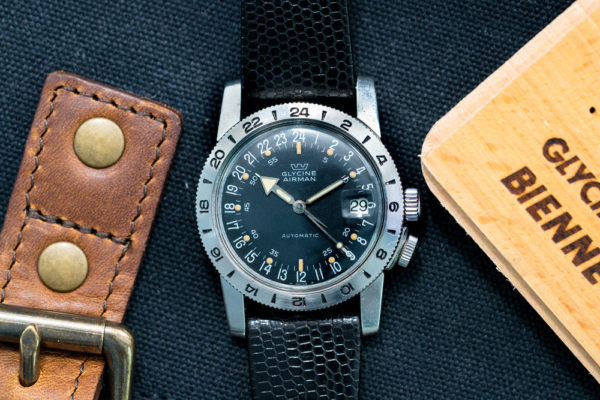
Eventually, I started thinking about the Swiss brand Glycine and their flagship Airman collection, today foremost led by the “Airman Contemporary” sub-series. These watches are characterized by large diameters, thick cases, and lugs, and a bulky dial meant to appeal to the masculine — attributes many have argued originate from the purchase of the brand by the Invicta Watch Group in 2016. Yet underneath these contemporary details lay the barebones of the 1953 developed collection: a 24-hour GMT function, a 24-hour dial, and two distinct crowns to operate both. More recently Glycine, in the face of the growing neo-vintage trend, has taken these barebones and released the “Airman Vintage” sub-series: a diverse collection of Airman re-issues in a range of styles, sizes, and colors, each competitively priced for the modern market (picture above, via Those Watch Guys).
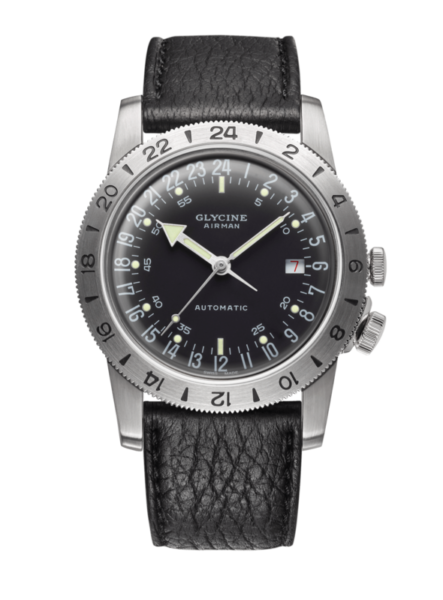
The original Airman from 1953 was designed out of what the brand felt was necessity for pilots. As intercontinental travel became increasingly popular and the use of a standard GMT time became common practice among aviators, Glycine began work on a timepiece that would appeal to professionals and amateurs alike. This new Glycine watch, the first Airman, hosted what would become its iconic features: the 24-hour rotating bezel, the 24-hour dial, and the double crowns. In its first few years, the watch developed further, transitioning most from the use of double dauphine hands to a double “pencil” configuration, and then eventually setting on the distinct hour arrow and minute syringe combination. Then in 1967, the watch had its first significant makeover in the space age SST models (picture below), and another big transition in 1978 as the series transitioned into Quartz movements.
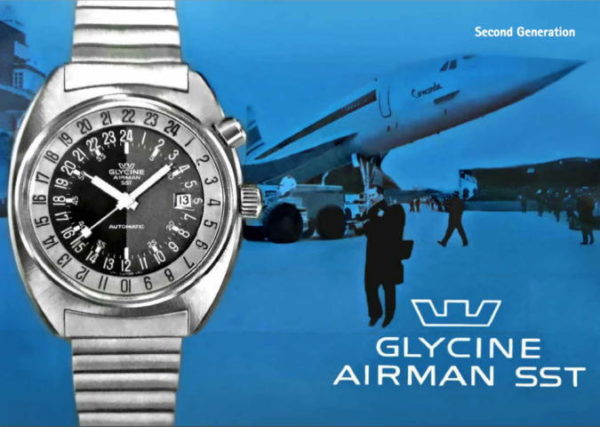
Today’s Airman Vintage collection encompasses models expressing both early and later designs of the series, even including a 1953-inspired, dauphine-handed model and two new vintage SST models, though we’ll be focusing on the design iteration the Airman is best known by. Each of the watches comes in either a 42, 40, or 36-mm sizing, with a thick lugged steel case and rotating outer bezel marked for each of the day’s 24-hours. On the right side of the case, which depending on the model is available in a few different colors, are the watch’s two distinct crowns for adjusting both the local and GMT times. The dial hosts the features which the vintage Airman is likely best known for, with an outer ring of Arabic numerals for the tipped and tailed arrow 24-hour hand to tell the time. It then has an inner minute ring with differentiated circles and rectangles for every five minutes, and subtle Arabic numerals just within these, and a red colored date window at the 3 o’clock position. Another syringe style hand is used to tell the local minutes, while a small lollipop tipped hand is used to indicate the second time zone.
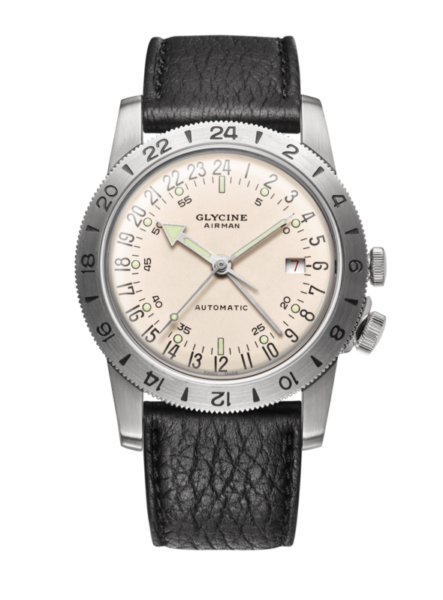
Inside each of the contemporary Airman models is the ETA 2893-2 based and Glycine-finished GL293 Swiss automatic movement, capable of a 42-hour power reserve and hidden behind a simple steel case back. One major difference between the Airman Vintage and the vintage Airman is that the original Airman models had a unique hacking mechanism for the seconds hand, which allowed it to return to the top of the dial— that is, the point of zero seconds counted— upon pulling out the crown to adjust the time. Although this feature has long been a signature style of the series, Glycine has since stopped using it in today’s examples. Depending on the model, you can currently find watches in the Airman Vintage collection for under $1000, and more frequently for as low as $600 depending on the dealer.
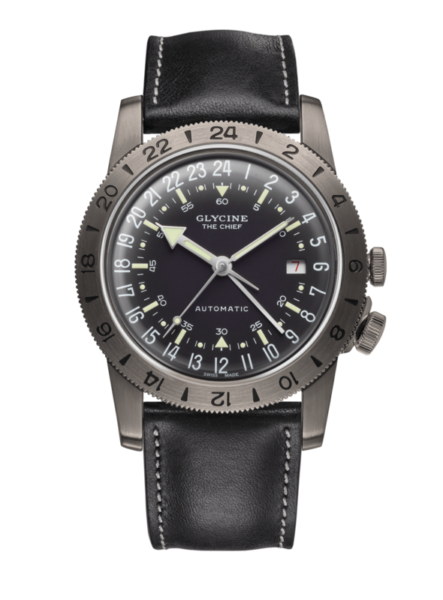
Between the vintage and modern re-editions, most of the primary design features have remained the same. With a thick case, double crowns, a rotating 24-hour bezel, and 24-hour dial, and its unique set of hands, each of the traits the Airman is known for stand strong. Of the differences, few of the new models feature the cyclops date window popular on the historic pieces, the actual script for the date is red as compared to the vintage black, and the build quality and color options now available are cleaner and more varied. As well, the Glycine logo is missing at the top of the dial on the modern watches, and as mentioned before the hacking mechanism the vintage movement is known for is no longer available.
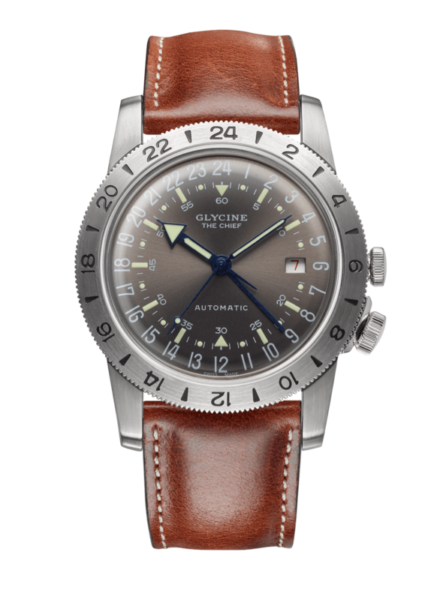
The Rolex GMT-Master II is likely today’s most recognizable GMT watch (and interestingly enough, only one of two I’ve ever written about for WatchTime, the other being the Patek Philippe Calatrava Pilot Travel Time), though it’s a historic watch that is frequently inaccessible to the mass market. Conversely, the Glycine Airman Vintage is much more accessible in price, and features a distinctive design from the popular Rolex model. This doesn’t make the Airman better by any extent, but it does make it easier to add to a growing collection. This might be the reason why the series has lasted so long and so prominently for the brand in face of decades of technological and market competition.
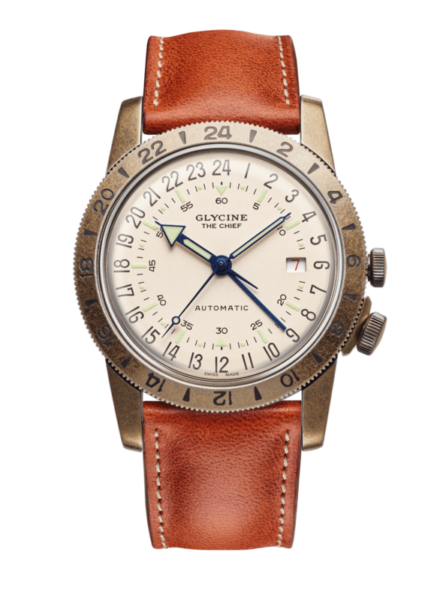
For the most recent article in the “Vintage Eye” series where we compare the Oris Big Crown Pointer Date to its historical predecessor, click here.
Caleb Anderson is a freelance writer with a primary focus on vintage watches. Since first discovering horology, he has garnered extensive knowledge in the field and spends much of his time sharing his opinions among other writers, collectors, and dealers. Currently located near New York City, he is a persistent student in all things historical, a writer on many topics, and a casual runner.

It is interesting watch indeed but during the training we was said by the company trainers that it was second watch in queue after Omega To be worn by Apollo astronauts.Good watch don’t need such nonsense stories